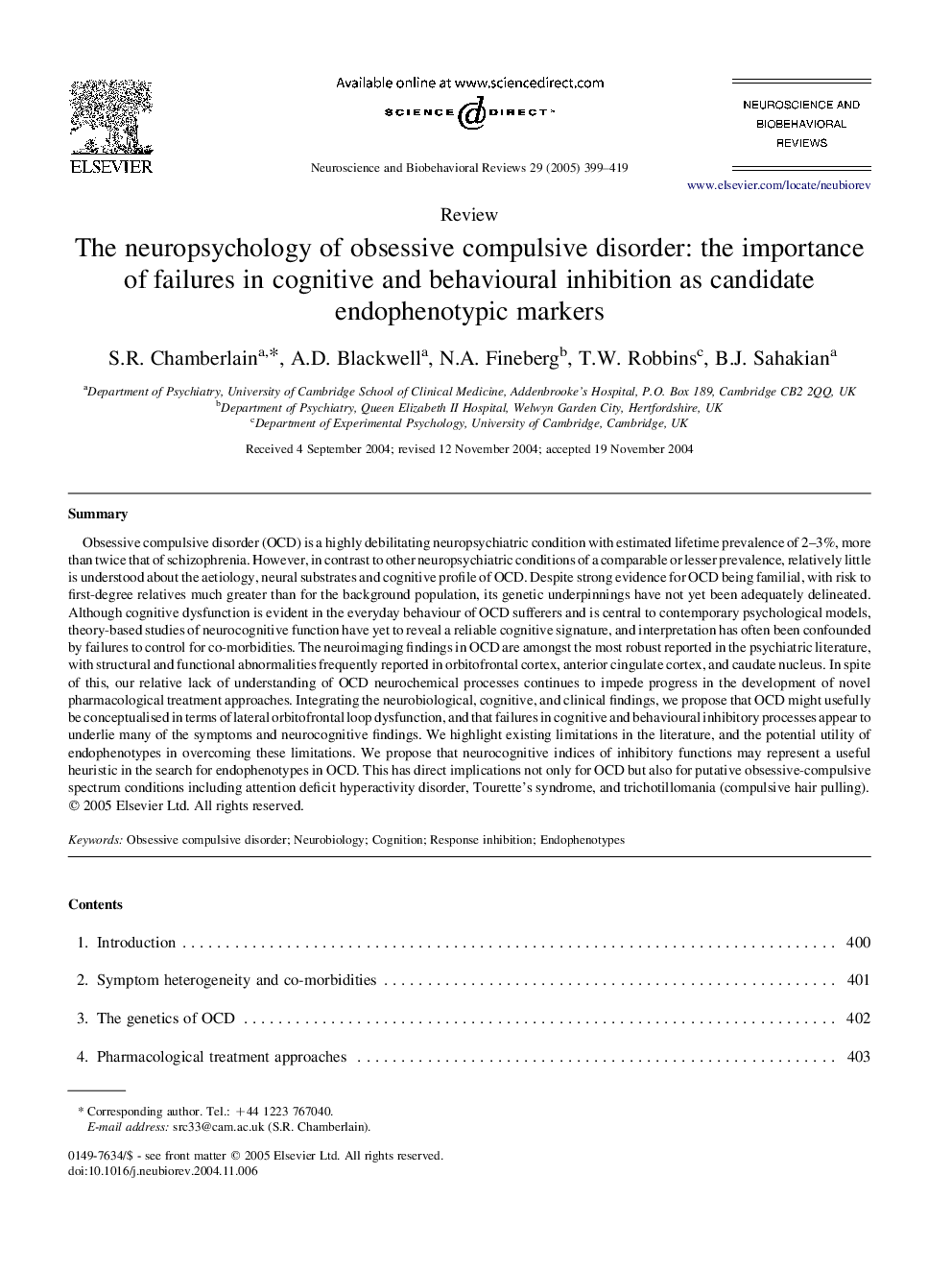| Article ID | Journal | Published Year | Pages | File Type |
|---|---|---|---|---|
| 10461927 | Neuroscience & Biobehavioral Reviews | 2005 | 21 Pages |
Abstract
Obsessive compulsive disorder (OCD) is a highly debilitating neuropsychiatric condition with estimated lifetime prevalence of 2-3%, more than twice that of schizophrenia. However, in contrast to other neuropsychiatric conditions of a comparable or lesser prevalence, relatively little is understood about the aetiology, neural substrates and cognitive profile of OCD. Despite strong evidence for OCD being familial, with risk to first-degree relatives much greater than for the background population, its genetic underpinnings have not yet been adequately delineated. Although cognitive dysfunction is evident in the everyday behaviour of OCD sufferers and is central to contemporary psychological models, theory-based studies of neurocognitive function have yet to reveal a reliable cognitive signature, and interpretation has often been confounded by failures to control for co-morbidities. The neuroimaging findings in OCD are amongst the most robust reported in the psychiatric literature, with structural and functional abnormalities frequently reported in orbitofrontal cortex, anterior cingulate cortex, and caudate nucleus. In spite of this, our relative lack of understanding of OCD neurochemical processes continues to impede progress in the development of novel pharmacological treatment approaches. Integrating the neurobiological, cognitive, and clinical findings, we propose that OCD might usefully be conceptualised in terms of lateral orbitofrontal loop dysfunction, and that failures in cognitive and behavioural inhibitory processes appear to underlie many of the symptoms and neurocognitive findings. We highlight existing limitations in the literature, and the potential utility of endophenotypes in overcoming these limitations. We propose that neurocognitive indices of inhibitory functions may represent a useful heuristic in the search for endophenotypes in OCD. This has direct implications not only for OCD but also for putative obsessive-compulsive spectrum conditions including attention deficit hyperactivity disorder, Tourette's syndrome, and trichotillomania (compulsive hair pulling).
Related Topics
Life Sciences
Neuroscience
Behavioral Neuroscience
Authors
S.R. Chamberlain, A.D. Blackwell, N.A. Fineberg, T.W. Robbins, B.J. Sahakian,
